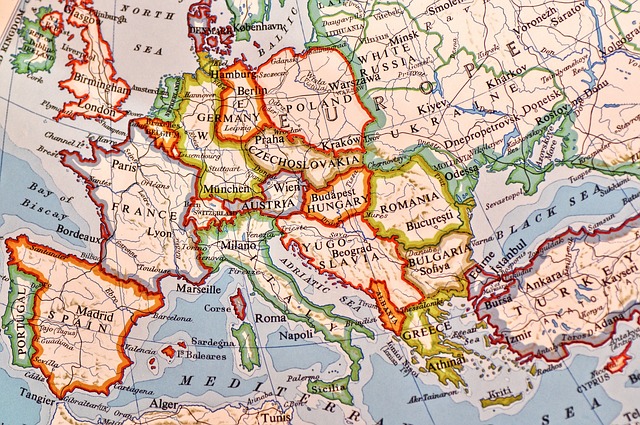Climate Tech Revolution: Made in Europe
Climate change casts a long shadow over Europe. Rising temperatures, increasingly volatile weather patterns, and rising sea levels threaten ecosystems, infrastructure, and the very fabric of European life. In response, the European Union (EU) has embarked on an ambitious green agenda, aiming for carbon neutrality by 2050 [1]. However, achieving this goal necessitates a dramatic shift in how we generate and consume energy, manage resources, and develop infrastructure. Here’s where innovation enters the stage.

The EU recognizes that technological advancements are crucial in tackling climate change effectively. Enter Innovation Hubs – a network of regional centers across Europe dedicated to fostering the development and deployment of innovative solutions for environmental sustainability. These hubs act as catalysts, connecting innovative startups, established corporations, research institutions, and investors. They provide essential resources like funding, mentoring, and access to testing facilities, accelerating the journey of promising ideas from concept to reality.
This article delves into the workings of Innovation Hubs and explores how they are propelling Europe towards a greener future. We will examine the specific areas of focus for these hubs and highlight some of the groundbreaking technologies emerging from this collaborative environment.
Uniting Minds and Resources: The Power of Innovation Hubs
Innovation Hubs function on a collaborative principle. They bring together diverse players within the cleantech ecosystem – startups brimming with fresh ideas, established companies seeking to innovate, researchers pushing the boundaries of scientific knowledge, and investors eager to back promising ventures.
These hubs offer a range of services to propel innovative ideas forward. One crucial offering is funding. Through grants, competitions, and investment programs, hubs provide financial support for startups developing clean technologies. Additionally, hubs equip startups with mentorship programs, connecting them with experienced professionals who can guide them through the development and commercialization process.
Access to state-of-the-art testing facilities is another vital resource provided by many hubs. These facilities enable startups to validate their technologies in a simulated environment, ensuring their solutions are practical and effective in real-world applications. Finally, hubs foster collaboration and knowledge exchange by organizing networking events, workshops, and conferences. These events bring together key stakeholders, facilitating partnerships and the cross-pollination of ideas.
Specific Areas of Focus:
Innovation Hubs tackle a wide range of climate challenges, but some key areas receive particular attention.
- Renewable Energy: Developing novel technologies to generate clean energy is a top priority. This includes advancements in solar panels, wind turbine design, and energy storage solutions.
- Energy Efficiency: Innovation in this area focuses on technologies that reduce energy consumption in buildings, industries, and transportation sectors.
- Sustainable Materials: Development of new materials with a lower environmental footprint is another crucial area. This includes bioplastics, recycled materials, and new construction technologies.
- Circular Economy: Fostering technologies that promote reuse, recycling, and waste reduction is an important focus area.
Sparking Innovation: Examples of Breakthrough Technologies
The collaborative environment nurtured by Innovation Hubs is already yielding impressive results. Here are a few examples of groundbreaking technologies emerging from this network:
- Nano-coating for solar panels: A Dutch startup developed a nano-coating technology that significantly increases the efficiency of solar panels, potentially leading to cheaper solar energy and wider adoption.
- Smart grids for energy management: A German hub facilitated the development of a next-generation smart grid system that optimizes energy distribution and integrates renewable energy sources more effectively.
- Carbon capture and storage technology: A French hub supported research into a technology that captures carbon dioxide emissions from industrial processes and safely stores them underground, mitigating their impact on the atmosphere.
- Biodegradable packaging materials: Innovation from a Spanish hub led to the creation of a sustainable alternative to traditional plastic packaging made from plant-based materials that decompose naturally.
These are just a few examples of the many promising technologies emerging from Innovation Hubs across Europe. As these hubs continue to foster collaboration and accelerate innovation, we can expect even more groundbreaking solutions to address our climate challenges.
The Road Ahead: A Brighter, Greener Future
Innovation Hubs play a pivotal role in Europe’s fight against climate change. By nurturing a collaborative environment and providing crucial resources, they empower startups and established companies to develop and deploy game-changing technologies. The success of these hubs hinges on sustained investments, fostering cross-border collaboration, and ensuring an inclusive environment that embraces diverse ideas and expertise.
As Europe continues to push the boundaries of innovation in cleantech, we can look forward to a future where sustainable solutions power our economies, protect our environment, and ensure a greener future for generations to come.
References
The European Green Deal. (2021b, July 14). European Commission. https://commission.europa.eu/strategy-and-policy/priorities-2019-2024/european-green-deal_en